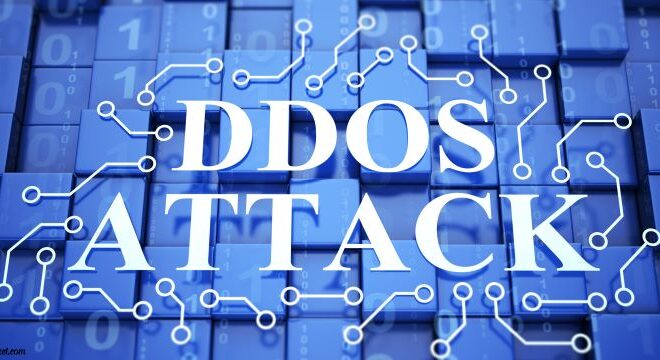
Securing the Future: Cybersecurity Strategies in the Manufacturing Sector
Understanding Cybersecurity Challenges in Modern Manufacturing
In the age of Industry 4.0, the manufacturing sector has become more connected than ever, with the Internet of Things (IoT) and intelligent machinery streamlining operations. However, increased connectivity means more significant vulnerabilities, and manufacturers are now a prime target for cyber-attacks. This new battlefield is not confined to digital assets; cyber threats can halt production lines, cause safety concerns, and result in significant financial losses. For these reasons, a comprehensive approach to cybersecurity for manufacturing is not a luxury but a necessity. Industry leaders must recognize their unique challenges, such as protecting complex networks and proprietary production processes, and strive for resilient, fortified cyber defenses.
The Importance of Risk Assessment and Management
Understanding the cyber threat landscape is the first step to mounting an effective defense. Risk assessment is a crucial process by which potential vulnerabilities can be identified and prioritized. Sophisticated risk management strategies then provide a framework to address these weak spots through tailored security measures. Regular reviews are necessary as new technologies and threats emerge, ensuring a company’s cybersecurity posture remains robust. Indeed, risk assessment is much like a game of chess: it requires foresight, strategy, and the ability to adapt to an ever-changing opponent.
Furthermore, practical risk assessment and management not only mitigate potential cybersecurity breaches but also safeguard critical assets and sensitive information, preserving the trust of customers and stakeholders. By integrating risk management into broader business strategies, organizations can align security efforts with overarching goals, enhancing resilience and agility in the face of evolving threats. Proactive risk assessment and management are essential components of a comprehensive cybersecurity strategy, fostering a culture of vigilance and preparedness within the organization.
Implementing Effective Access Control Measures
Consider a manufacturing plant as a castle that requires layered defenses against intruders. At the heart of these defenses sits access control, the drawbridge that permits entry only to those with the correct credentials. Manufacturers must ensure that only authorized personnel have access to critical systems, which can be achieved through role-based access control (RBAC), zero-trust security models, and multi-factor authentication. In particular, RBAC ensures that employees can only access information essential to their role, minimizing unnecessary exposure to sensitive data and systems. Such approaches represent a proactive stance on cybersecurity, keeping potential attackers at bay, even if they manage to scale the outer walls.
Exploring the Role of Employee Training and Awareness
While systems and protocols form the technical foundation of cybersecurity, the human element must be considered. It’s often said that a company’s cybersecurity is only as strong as its weakest link, such as a single employee clicking a malicious link. Education is the shield that can protect against such vulnerabilities. Regular training sessions and simulations of potential attack scenarios empower employees to recognize and appropriately respond to cyber threats. Moreover, ongoing awareness initiatives can help cultivate a culture of security-minded behavior, thereby integrating cybersecurity into the daily workflow of every team member.
Investing in Cutting-Edge Security Technologies
Protecting against modern cyber threats requires modern solutions. Manufacturers need to employ a suite of advanced security technologies that work in conjunction to detect, prevent, and respond to incidents. These may include next-generation firewalls, anomaly detection powered by artificial intelligence, and secure cloud storage solutions. The power of such tools lies not only in their defense capabilities but also in their potential to offer insight into the vast amounts of data that traverse manufacturing networks. By leveraging these insights, companies can proactively identify and patch potential weaknesses before exploiting them.
Furthermore, committing to invest in state-of-the-art security technologies showcases a dedication to remaining ahead of evolving cyber threats, thereby bolstering the company’s image as a trustworthy and secure ally. Through ongoing assessment and incorporation of emerging technologies, manufacturers can effectively adjust to emerging attack methods and maintain resilience amidst swiftly evolving cyber environments. Ultimately, embracing progressive security solutions empowers manufacturers to safeguard their operations and seize opportunities for expansion and innovation within an increasingly digital landscape.
Staying Updated with Compliance and Regulatory Standards
Regulatory compliance is more than just ticking boxes to avoid legal repercussions; it provides a framework for implementing robust cybersecurity defenses. Standards like the National Institute of Standards and Technology (NIST) framework and the International Organization for Standardization (ISO) guidelines for information security management help manufacturers establish thorough and resilient cybersecurity programs. These standards foster an environment of continual improvement, ensuring that defenses evolve in line with the threat environment and technological advancements within the industry.
Monitoring and Responding to Cybersecurity Incidents
Even the most fortified castles can fall, so continuous vigilance is critical. Cybersecurity incident monitoring means constantly monitoring network traffic and system activities to detect anomalies that could signal a compromise. However, detection is only part of the equation; an effective incident response capability is essential. This involves pre-defined action plans and communication protocols to isolate breaches, assess impact, and minimize downtime quickly. The quicker a company can respond to an incident, the less severe the consequences will be, saving time and resources in the long run.
Manufacturers looking to stay ahead in the cybersecurity arms race would do well to consult external resources for the latest insights and trends.



